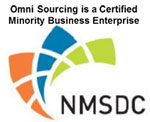 Mobile application testing has emerged as one of the most challenging areas for businesses. The mobile technology landscape is constantly adopting change and your QA function needs to invest significant time and effort to keep up with the changing hardware, software, communications and processes. Mobile application testing is significantly different compared to traditional testing methodologies. In order to understand the differences in testing approach, you need to understand the complexities that exist in delivering mobile application functionality to the end user.
Mobile application testing has emerged as one of the most challenging areas for businesses. The mobile technology landscape is constantly adopting change and your QA function needs to invest significant time and effort to keep up with the changing hardware, software, communications and processes. Mobile application testing is significantly different compared to traditional testing methodologies. In order to understand the differences in testing approach, you need to understand the complexities that exist in delivering mobile application functionality to the end user.A mobile application is structured as a multi-layered delivery platform comprised of user, transport, business and data layers. The testing process spans across all the components of the framework to verify functionality, consistency and reliability.


 Our innovative approach to mobile application testing will address your functional, performance and security business requirements. We utilize various testing techniques and processes to review user experience and the testing of mobile device/platforms, application store, network, location and data. During development of each mobile testing strategy, Omni Sourcing takes a hybrid, structured approach leveraging grey box testing, high-level test cases, available test tools (e.g., emulators, test labs) and exploratory testing. Our professional teams have a strong understanding of mobile users, devices and technology platform architectures and will guide you through the process.
Our innovative approach to mobile application testing will address your functional, performance and security business requirements. We utilize various testing techniques and processes to review user experience and the testing of mobile device/platforms, application store, network, location and data. During development of each mobile testing strategy, Omni Sourcing takes a hybrid, structured approach leveraging grey box testing, high-level test cases, available test tools (e.g., emulators, test labs) and exploratory testing. Our professional teams have a strong understanding of mobile users, devices and technology platform architectures and will guide you through the process.